How to Reduce Belly Fat: 9 Small & Easy Changes
Belly fat, especially visceral fat, can be a stubborn problem that not only affects your appearance but also increases your risk of chronic conditions like heart disease and diabetes.
Fortunately, making small diet and lifestyle tweaks can help you shed those extra pounds and enhance your overall well-being.
Below are nine proven strategies that target belly fat, reduce inflammation, and support a healthier body…
1. Increase Protein in Your Diet
A high-protein diet can work wonders for weight loss, particularly when it comes to targeting belly fat.
Protein promotes feelings of satiety and boosts your metabolism, helping you eat fewer calories throughout the day.
It also helps build and maintain lean muscle, which burns more calories than fat.
Incorporate more lean protein into your meals, such as chicken, fish, lean red meat, tofu, legumes, and low-fat dairy.
A higher protein intake can also tame the appetite, which helps you control cravings and avoid overeating.
2. Reduce Trans Fats
Trans fats are a type of unhealthy fat that have been linked to an increased risk of heart disease, inflammation, and abdominal fat gain.
They are often found in processed foods like baked goods, margarine, and fast food. To reduce belly fat, try to avoid trans fats altogether.
🥑 Instead, focus on healthy fats like those found in avocados, nuts, seeds, and olive oil.
These fats are not only good for your heart but also help keep you satisfied without adding to belly fat.
3. Limit GMOs
Genetically modified organisms (GMOs) are present in many processed foods today. Some studies suggest that they might contribute to obesity and metabolic disorders, including the accumulation of belly fat.
While more research is needed, opting for organic and non-GMO foods is a smart way to limit your exposure to potentially harmful substances.
Try to choose fresh, whole foods like fruits, vegetables, and whole grains that are non-GMO and grown without pesticides as often as you can.
By limiting processed foods, you’ll also reduce excess sugar, salt, and unhealthy fats from your diet.
4. Limit Alcohol Consumption
Alcohol, especially in excess, is known to contribute to weight gain around the belly area.
It’s high in calories and can disrupt your body’s ability to burn fat, making it more likely for those extra calories to be stored as fat.
Alcohol has a caloric value of 7 calories per gram, which places it closer to fats in terms of caloric intake.
For a flatter belly, consider limiting alcohol intake. If you do drink, opt for lighter beverages like wine or spirits mixed with soda water.
And always remember, moderation is key!
5. Reduce Stress and Avoid Long Workouts
Chronic stress is a common culprit behind belly fat. Stress triggers the production of the hormone cortisol, which has been linked to abdominal fat storage.
Additionally, long, intense workouts can increase cortisol levels, leading to more fat retention.
To reduce stress, incorporate relaxation techniques into your routine, such as meditation, deep breathing exercises, or yoga.
Change your circumstances, if possible.
If not, try to work on your perspective. Stress generated in the mind cannot be differentiated by stress in real life by the body.
When it comes to workouts, focus on shorter, high-intensity intervals instead of prolonged, overly intense sessions.
These can be just as effective at burning fat without triggering excessive cortisol release.
6. Lift Heavy Weights and Do HIIT
Building muscle can help with burning belly fat. Muscle is metabolically active and is now considered by many researchers as “the fountain of youth”.
Weightlifting increases lean muscle mass, which in turn boosts your metabolism and promotes fat burning.
Combine strength training with High-Intensity Interval Training (HIIT) for the best results.
HIIT workouts, which alternate between short bursts of intense exercise and recovery periods, have been shown to burn fat, including belly fat, more effectively than traditional steady-state cardio.
Both also have been shown to boost EPOC, or excess post-oxygen consumption.
This “afterburn” effect is responsible for burning more calories hours after you’ve finished your workout.
📝 Together, weightlifting and HIIT will help you burn fat faster and build a stronger, leaner body.
7. Improve Sleep and Sleep Hygiene
Sleeping well promotes weight loss and belly fat reduction. Poor sleep has been linked to weight gain and an increased appetite, especially for high-calorie foods.
A lack of sleep also impacts your hormone balance, particularly the hormones ghrelin and leptin, which control hunger and satiety.
It’s not always easy to get quality sleep as we age, but improving sleep hygiene can help with better sleep over time.
To improve your sleep hygiene, aim for 7-9 hours of quality sleep each night.
Avoid caffeine late in the day, establish a consistent bedtime routine, and create a calming sleep environment by minimizing light and noise.
A couple of hours before bed, try to switch from overhead lighting in your house to lamps, try to get a few minutes of daylight as the sun is setting for a quick circadian reset, and try to limit electronics.
Good sleep will help you feel more energized during the day and help with fat loss, including around your belly.
8. Reduce Plastic Exposure
Plastics contain harmful chemicals, such as BPA (bisphenol A), which have been linked to various health issues, including weight gain and the accumulation of belly fat.
Reducing your exposure to plastics can help protect your body and promote a healthier lifestyle.
Start by reducing your use of plastic containers, especially when heating food. Opt for glass, stainless steel, or other non-toxic materials for food storage and cooking, when possible.
Also, avoid plastic water bottles by switching to reusable, BPA-free alternatives.
Every little bit helps – plastic is all around us and even by limiting your exposure, it can help in the long term.
9. Green Tea and Fish Oil: Natural Fat Burners
Both green tea and fish oil are natural supplements that can help support fat loss, especially belly fat.
Green tea contains antioxidants called catechins that increase fat burning, particularly when combined with exercise.
Drinking a cup or two of green tea each day can give your metabolism a gentle boost.
Fish oil, rich in omega-3 fatty acids, helps reduce inflammation and may aid in reducing belly fat.
Omega-3s are also heart-healthy and support overall well-being.
Adding a fish oil supplement to your routine or increasing your intake of fatty fish like salmon, sardines, and mackerel can have long-term health benefits.
Reducing belly fat requires a holistic approach that focuses on healthy eating, exercise, stress management, and lifestyle choices.
By making small but impactful changes, you can achieve a flatter belly and improve your overall health.
Focus on a balanced diet rich in protein, healthy fats, and nutrient-dense foods while incorporating strength training, HIIT, and stress-reducing habits.
Remember, consistency is key, and with time, you’ll begin to see positive changes!
Thanks for reading!
Until next time…
Train smart and train hard 💪





